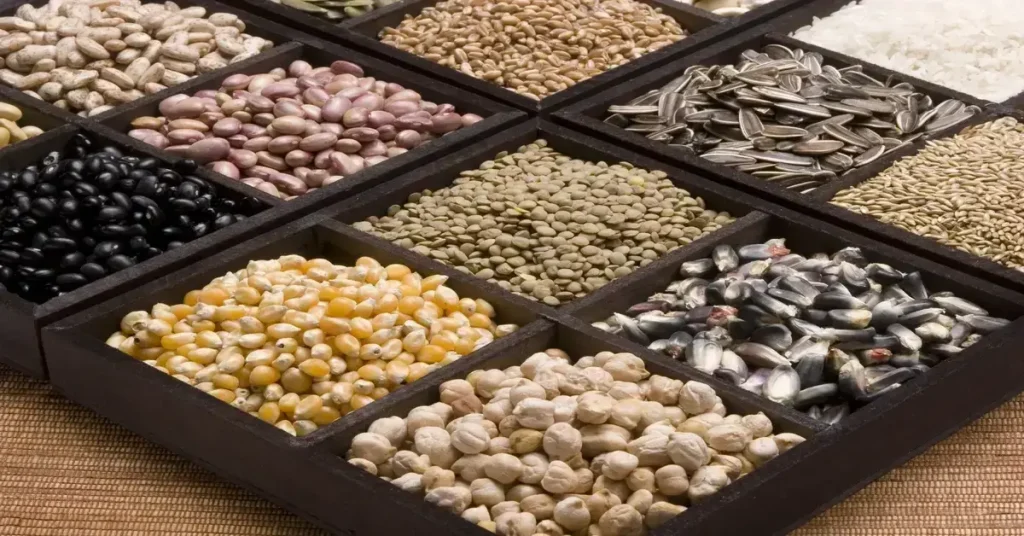F1 hybrids are the first generation of plants produced by crossing two genetically distinct parent varieties. Renowned for their hybrid vigor, these plants often exhibit greater health, growth rate, and resistance to disease than their parents. F1 seeds are sought in gardens and farms for their reliable uniformity and often superior phenotype, providing a predictable and bountiful harvest.
Defining F1 Hybrid Seeds
The Basics of F1 Hybridization
F1 hybrid refers to the first filial generation seeds resulting from the controlled pollination of two parental types. These initial offspring display heterosis or hybrid vigor, resulting in plants that grow stronger, yield more, and are often more resistant to disease and environmental stresses than either parent strain.
Selective Breeding and its Outcomes
Plant breeders select parent plants with desirable traits to produce F1 hybrids. This process of selective breeding ensures that the resulting F1 plants inherit a combination of characteristics, such as improved vigor or specific flower colors, that are often more pronounced than those found in either parent. This careful selection leads to uniformity and predictability, making F1 hybrids popular among gardeners and commercial growers.
The Advantages of F1 Hybrid Plants
Hybrid Vigor: The Hallmark of F1 Hybrids
Hybrid vigor, or heterosis, is observed in F1 hybrid plants where the first generation exhibits superior qualities to the parent varieties. These plants often grow more vigorously, show increased disease resistance, and produce a more abundant harvest. Hybrid vigor makes F1 hybrids particularly valuable in agricultural sciences and garden cultivation.
Consistency in Growth and Yield
The uniformity of F1 hybrids is a significant advantage. When gardeners or farmers plant F1 seeds, they can expect consistent crop growth, development, and maturity. This predictability is vital for planning and marketing crops and is a desirable trait that seed companies often highlight. With F1 hybrids, there is an assurance of plant performance that comes from their genetically uniform background.
Creating F1 Hybrids
The Process of Cross-Pollination
Creating F1 hybrids involves the meticulous process of cross-pollinating two selected parent plants. Breeders carefully choose these parent plants for their desirable traits, such as flower color, fruit size, or resilience. Controlled pollination, often done by hand, ensures that the pollen from one parent plant fertilizes the other, resulting in the desired F1 offspring.
The Role of Genetic Diversity
The parent plants creating F1 hybrids are often inbred lines, meaning they are genetically homozygous and have stable and predictable traits. When cross-pollinating these, the F1 generation becomes heterozygous, combining the strengths of both parents. This genetic diversity within F1 plants contributes to their robustness. It is a key concept in understanding plant varieties and their breeding.
The Distinction of F1 Hybrids from Open-Pollinated and Heirloom Varieties
Hybrids vs. Open-Pollinated Plants
F1 hybrids differ significantly from open-pollinated varieties, fertilized by natural mechanisms like wind, insects, or self-pollination. While open-pollinated plants can exhibit diverse traits within a population, breeders create F1 hybrids for specific, uniform characteristics. This uniformity is often absent in open-pollinated varieties, where plants show a more comprehensive range of traits due to genetic variation.
F1 Hybrids and Heirloom Varieties
Compared to heirloom varieties, passed down through generations and prized for their flavor and historical significance, F1 hybrids are a modern creation designed for commercial advantage and uniformity. Heirloom seeds tend to produce plants that may not be identical but are true to type, reflecting the genetic mix of their lineage. In contrast, F1 hybrids are a first-generation cross aimed at achieving a predictable and vigorous phenotype not typically found in heirlooms.
The Economics of F1 Hybrid Seeds
Cost Implications for Gardeners and Breeders
The production of F1 hybrid seeds is often expensive due to the labor-intensive process of controlled pollination and the need for breeders to maintain pure parent lines. For gardeners, purchasing F1 hybrid seeds typically costs more than open-pollinated or heirloom seeds. However, the vigorous growth and higher yields of hybrid seeds may justify the investment.
Seed Saving Considerations
One notable disadvantage of F1 hybrid plants is that saving seeds from these plants for future planting is generally not recommended. The seeds may not “breed true,” meaning the next generation (F2) could lack the uniformity and desirable traits of the F1 generation. This leads to a recurring cost for gardeners who must purchase new F1 seeds each season rather than saving seeds from their current crops.
Seed Saving and the Generational Shift of F1 Hybrids
The F2 Generation and Beyond
When gardeners save the seeds of an F1 hybrid plant, the subsequent generation, known as F2, exhibits a wide array of traits due to genetic recombination. This diversity means that F2 plants will not have the uniformity of the F1 generation. As a result, plants grown from F2 seeds may vary significantly regarding phenotypic characteristics such as size, color, and hardiness.
Long-term Implications for Plant Diversity
While gardeners do not typically use F1 hybrids for seed saving, the F2 and subsequent generations can be valuable for those interested in developing new plant varieties. These generations allow natural selection to play a role in the survival and adaptation of plants, potentially leading to the development of new, stable types that may one day be considered heirloom plants themselves. However, this process requires patience and a long-term commitment to selection and breeding.
Conclusion
The journey from selective pollination to the cultivation of F1 hybrids is a testament to the ingenuity of plant breeders. These seed varieties, created to harness disease resistance and vigorous growth, offer gardeners and farmers a reliable option for their horticultural endeavors. While F1 hybrids may not be the choice for those looking to pollinate and save seeds due to their genetic complexity, they stand as pillars of modern agriculture, providing consistency and productivity in various growing conditions.

